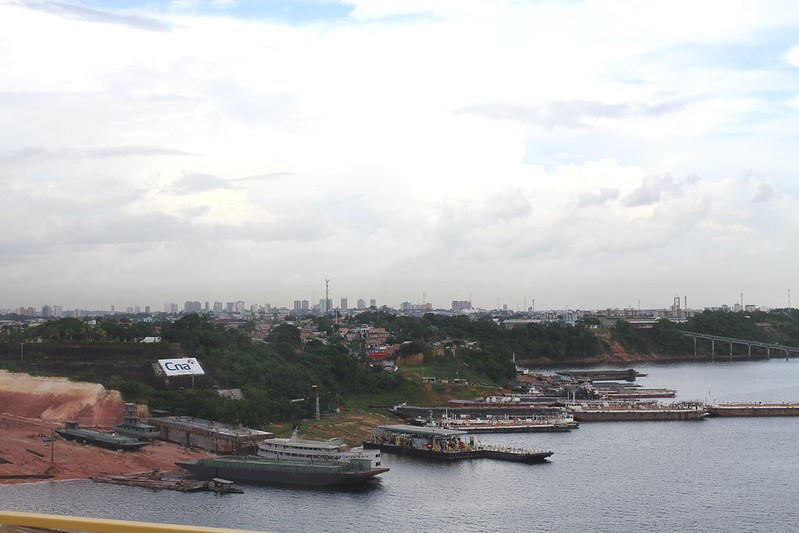Urban Pollution Affects the Life Cycle of Amazon Rainforest Clouds
Published: 23 February 2022
ASR-funded work builds upon earlier research using ARM data from GoAmazon2014/15 campaign

Aerosols play a crucial role in the Earth’s energy balance and water cycle by interacting with incoming solar radiation and serving as critical seeds for cloud formation. However, their indirect effects on clouds, radiation, and precipitation are some of the most uncertain factors in predicting future global climate change.
In 2014 and 2015, the Atmospheric Radiation Measurement (ARM) user facility conducted a field campaign in Brazil that aimed to improve understanding of aerosol and cloud life cycles. The Green Ocean Amazon (GoAmazon2014/15) campaign took place near the city of Manaus in the central Amazon Basin.
Scientists have wanted to know how pollution might affect clouds and precipitation in the Amazon. Prior work based on GoAmazon data showed that extremely small particles—or nanoparticles—could contribute to convective cloud growth in the Amazon. Such particles can be smaller than one-thousandth the width of a human hair.
A recent study led by Rahul Zaveri at Pacific Northwest National Laboratory in Washington state builds upon this previous research.
With support from the U.S. Department of Energy’s Atmospheric System Research (ASR), the team investigated the pathways responsible for the observed rapid growth of nanoparticles in an urban pollution plume downwind of Manaus. Scientists were able to show how these nanoparticles could grow into particles large enough to seed shallow convective clouds.
The research, published by the journal Science Advances in January 2022, combined model analysis of field measurements from GoAmazon and insights from laboratory studies of secondary organic aerosol growth dynamics.
The lab studies took place at PNNL’s Environmental Chamber with some support from the Environmental Molecular Sciences Laboratory (EMSL), which, like ARM, is a DOE Office of Science user facility.
Growing Particles Lead to Growing Clouds

Researchers found that nanoparticles rapidly grew mainly because of condensation of somewhat volatile organic, or carbon-based, vapors. These vapors form from the oxidation of compounds emitted by plants and trees.
Some of the larger particles grown by volatile organic vapors became cloud condensation nuclei, or particles on which water condenses to form cloud droplets. This resulted in substantially increased concentrations of cloud condensation nuclei downwind of Manaus.
The additional nuclei altered the formation of shallow convective clouds. When more cloud condensation nuclei are present, the clouds are made up of a greater number of smaller cloud droplets, which scatter more light and suppress rain. The suppression of rain allows the shallow clouds to transition to deep convective clouds.
This study fills in key knowledge gaps linking aerosol evolution to convective cloud properties. It shows that improving scientific understanding of the growth mechanisms associated with nanoparticles is necessary to better predict the effects of aerosols on clouds.
“This is one of the first studies to bring together new physical and chemical knowledge of the aerosol growth process, demonstrating its influence on clouds in a real-world case,” says Zaveri.
The results improve the fundamental scientific understanding of how pollution-caused nanoparticles grow and affect cloud life cycles in the otherwise pristine Amazon rainforest. This understanding will help scientists provide a better perspective on—and help improve—model representations of the broader impacts of air pollution regulations on climate.
Editor’s note (March 16, 2022): In March 2022, the earth and space science publication Eos featured the paper covered here. Read the article.
Keep up with the Atmospheric Observer
Updates on ARM news, events, and opportunities delivered to your inbox
ARM User Profile
ARM welcomes users from all institutions and nations. A free ARM user account is needed to access ARM data.


















